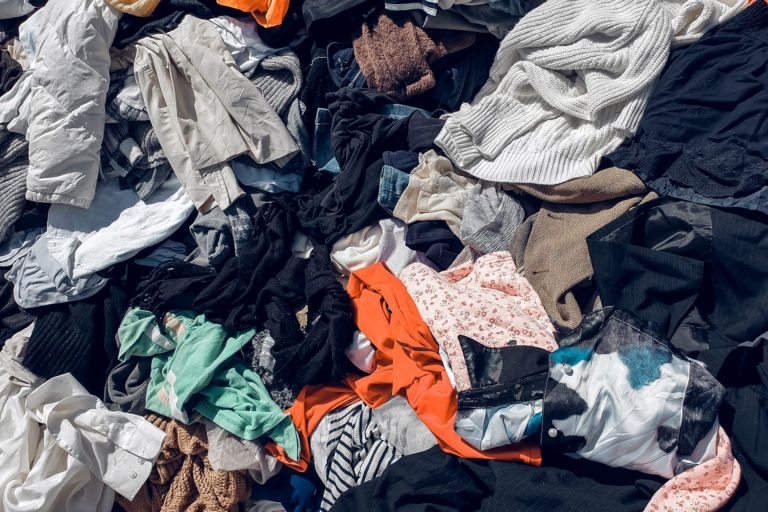Researchers at the University of Delaware have developed a revolutionary method for recycling clothing that can break down fabric in just 15 minutes, which could have a major impact on the fashion industry.
Textile waste has a devastating impact on the planet: Earth.org estimates that more than 101 million tonnes of fashion waste ends up in landfills around the world every year, which equates to one garbage truck’s worth of clothing being dumped into landfills every second.
In addition to the massive environmental damage caused by fast fashion, it also hurts communities living near illegal waste dumps. According to The Guardian, residents living near a “global sacrifice zone” for used clothing in Chile’s Atacama Desert regularly breathe in toxic fumes released when discarded clothing is incinerated.
That’s why scientists and companies are rushing to find quick solutions to clean up the fashion industry’s waste. Luckily, a recycling technique proposed by UD researchers could be a viable option. As reported by The Washington Post, the technique uses chemical solvents and microwaves to break down blended fabrics like cotton, polyester, nylon, and spandex down to their basic molecular forms.
The researchers said that through this chemical process, the molecules could be used to produce other products such as new clothing, dyes, electronics and car parts.
This creates a truly circular system where old clothes are reused to make new items, rather than being thrown away at the end of their lifecycle.
Sign up for our newsletter and get the best news, eco-friendly hacks, and the latest in cool clean tech delivered straight to your inbox every week.
Unfortunately, many clothing recycling companies can’t separate mixed fabrics, so it’s up to consumers and businesses to find sustainable options, The Washington Post explains. To that end, thrift stores are becoming more popular, and some companies are working to produce more durable, higher-quality clothing.
Still, chemical recycling may be useful as a last resort.
“This will be the final stage for leftovers that have no other use,” Tasha Lewis, an associate professor in the Ohio State University School of Fashion Studies, told The Post.
As the outlet details, the UD researchers’ recycling method is unique in that it doesn’t require knowledge of what materials were used to make the clothing, but it has only been tested in a lab and it could be a decade before it’s commercially available.
Thankfully, in the meantime, companies are actively working to help consumers make more sustainable choices: For example, Balenciaga partnered with Swiss company Qwstion to make biodegradable shoes from bananas, and nonprofit Cotton Incorporated launched a jeans recycling program that has prevented over 4 million denim items from ending up in landfills.
With less clothing in landfills, less harmful methane gas is released into the air, helping to cool the planet and protect communities from more extreme weather caused by a warming planet.
Recycling clothes certainly helps, but buying second-hand and shopping sustainably is even better for our wallets and Mother Earth.
Sign up for our free newsletter for weekly updates on the most amazing innovations that improve our lives and save the planet.


